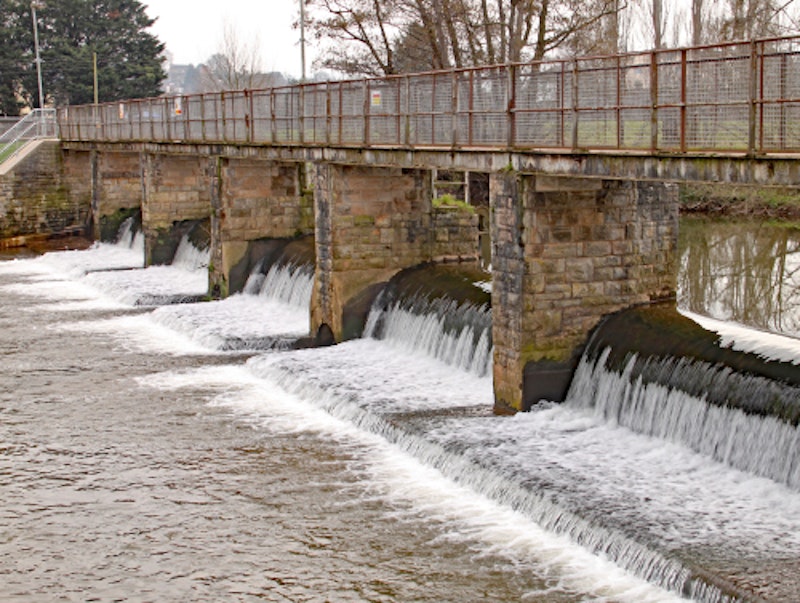Study Notes
GCSE Geography | Somerset Levels Flooding (Weather Hazards 12)
- Level:
- GCSE
- Board:
- AQA, Edexcel, OCR, Eduqas
Last updated 19 Jul 2023
One of the worse incidents of flooding in recent years took place in the Somerset Levels in Jan and Feb 2014 – with many villages underwater for several weeks. Somerset is in south-west England. The Somerset Levels and the Somerset Moors form an extensive area of low-lying farmland and wetlands, which are bordered by the Bristol Channel and Quantock Hills to the west and the Mendip Hills to the north.
Geographical context
The area is in the catchment of several rivers, with the biggest being the Tone and the Parrett, which flow to the Severn Estuary via the town of Bridgwater. Flooding has occurred naturally here for centuries, and the deposition of alluvium means land is excellent for farming, which in turn has encouraged settlements to develop. Building settlements here in the floodplain has increased the risk of flooding.
What led to the devastating floods of winter 2013-14?
There were lots of factors at play here...
Firstly it was the wettest January on record (and records began in 1910) – low pressure weather lasted weeks with a series of depressions coming over from the Atlantic, picking up moisture on the way, resulting in 35cm of rain falling in January and February – which was around 10cm more than average – so saturated ground unable to absorb anymore rainfall, leading to an increase in surface run-off.
Secondly, high tides clashed with storm surges, which swept huge amounts of water back up the Bristol channel – this means that fresh water trying to reach the sea was blocked and ended up spilling over the river banks.
Finally, local rivers had not been dredged for more than 20 years, meaning that they had become clogged with sediment and other debris, such as tree branches, which meant there was less capacity within the river channel, so less water could be held before a flood event occurred.

Impacts
This flood event was the most severe hazard event to ever hit this area, and as a result flooding of the Somerset Levels was the lead story on the national news, and was on the front page of all national newspapers. There were many social, economic and environmental impacts of these extensive floods.
In terms of social impacts, over 600 houses were flooded, and 16 farms evacuated, meaning that residents had to be evacuated to temporary accommodation, where many of them ended up staying for several months. Villages such as Moorland and Muchelney were completely cut off – which means that daily life became almost impossible, for example going to the shops, or going to school. Many villages were without power for several days or weeks – at a time when temperatures were low.
In terms of economic impacts, Somerset County Council estimated the cost of flood damage to be more than £10 million. There was a huge impact on farming with more than 14,00 ha of land used for grazing and crops under water for 3–4 weeks, and as a result 1000 livestock had to be evacuated. Local roads were cut off, as was the main railway line through the area.
In terms of environmental impacts, floodwaters were heavily contaminated with sewage and other pollutants such as oil and chemicals. Lots of debris had to be cleared once the floodwaters had subsided and the stagnant water that had collected for months had to be re-oxygenated before being pumped back into the rivers, otherwise it would have caused significant damage to marine ecosystems.

Responses
Immediate responses included residents being evacuated and given temporary accommodation elsewhere. The local community was well supported by an army of volunteers who set up support facilities in churches and village halls, and helped local people get to school, work and the shops using boats. Homeowners also moved their belonging upstairs and used sandbags to try to keep out as much flood water as possible.
In terms of long term responses to reduce the risk of future flooding, Somerset County Council developed a £20 million Flood Action Plan with support from the Environment Agency. This included a number of strategies, such as dredging the River Tone and River Parratt to increase the channel capacity; raising the road levels to stop villages getting cut-off in the future; putting flood defences in place in the most vulnerable villages; raising and strengthening river banks and installing more pumping stations. All of these measures should mitigate the risk of such an extreme event taking place again.

You might also like

3 great simulation games for geography lessons
2nd February 2016

Bad Weather in Moscow? It's Snow-Problem
19th January 2016

Protecting Vulnerable Populations Against the Risk of Cyclones
12th February 2016

Heavy flooding kills hundreds in South Asia
30th August 2017
New houses to be built on flood plains
24th February 2020
Coronavirus impacts on flood victims
28th March 2020